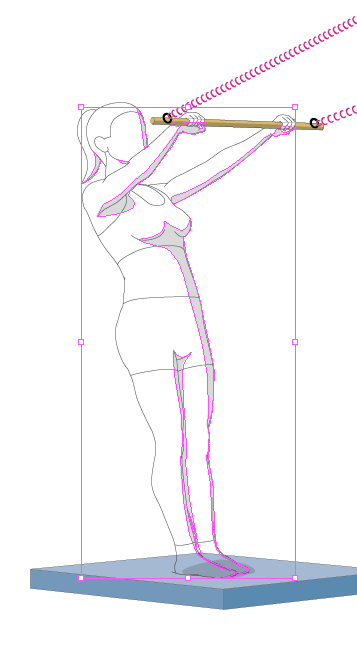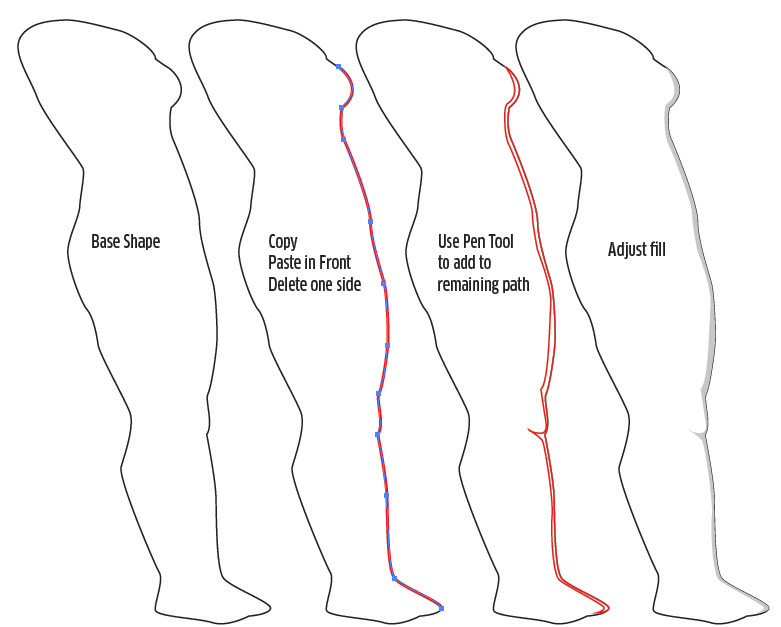For almost a year, I have been hiring an artist in Ukraine to draw some human figures for a book. I am saddened for him and for myself that he has informed me he can no longer work. He is a young man, and he has been drafted into military activity. I fear that he is already in combat. He was always a person of great integrity in all our interactions.
I hope I'm not being too self-centered when I say that I'm trying to figure out aspects of his method. I have a few drawings of his that still need shadows, and I fear he will never be able to finish them. This is why I'm trying to figure out his method for creating shadows. I looked at one of his previous shadows, and it is done with almost mathematical precision. Please see the figure below (I am hiding the coloring so you can see just the shadow). The artist did this drawing without the use of photos. Do you know of any tool he might have used? Or did he just use skill and experience?




